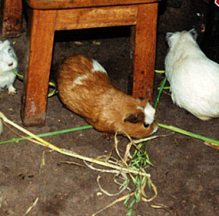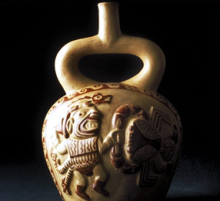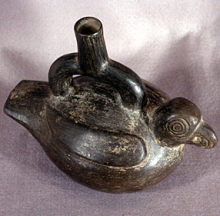explore
Coastal Desert - Wildlife

The desert, while home to scorpions, reptiles and spiders, is barren of even the hardiest vegetation. In areas of fog vegetation, or lomas, there are foxes, lizards, birds, snails, and deer. However, in the lush irrigated valleys, crops such as peanuts, maize, beans, squash, chili peppers and cotton flourished. Domesticated animals such as guinea pigs (pictured left) and ducks were kept for food, llamas and alpacas are known to have been on the coast, and the valleys were inhabited by game animals and birds.

The natural world was a source of inspiration for artists, and fish are a prominent motif in most art from the Americas. Crustaceans such as crabs (see left), lobster, and shrimp are part of the Moche sea iconography, and occur in Chimú and other Peruvian coastal cultures. Birds have also been important in everyday and ritual life. Vegetables such as beans and squash were often depicted on ceramics and some textiles.

This Humboldt current brings nutrients from the ocean floor that result in a rich source of plankton which feed the larger marine animals. Important sources of food in the past were sea lions, dogfish and rays, and large and small fish. Anchovies are smaller fish and feed on plankton. Anchovies were important to agriculture as fertilizer. They also provided food for three types of seabirds: cormorants (guanay), gulls (gaviota) and pelicans (alcatraz).
Image: Chimú stirrup spout vessel, c. A.D. 900-1450, depicting a parrot, a bird found in tropical forests far from the arid north coast. (Private Collection).

The birds live on small islands or peninsulas jutting out into the ocean where they deposit their droppings (or guano, which is harvested for use as fertilizer today as in the past). Guano is a Spanish word that was derived from the indigenous Quechua word wanu which means fertilizer or dung. Shellfish such as mussels and clams were also abundant along the coast.